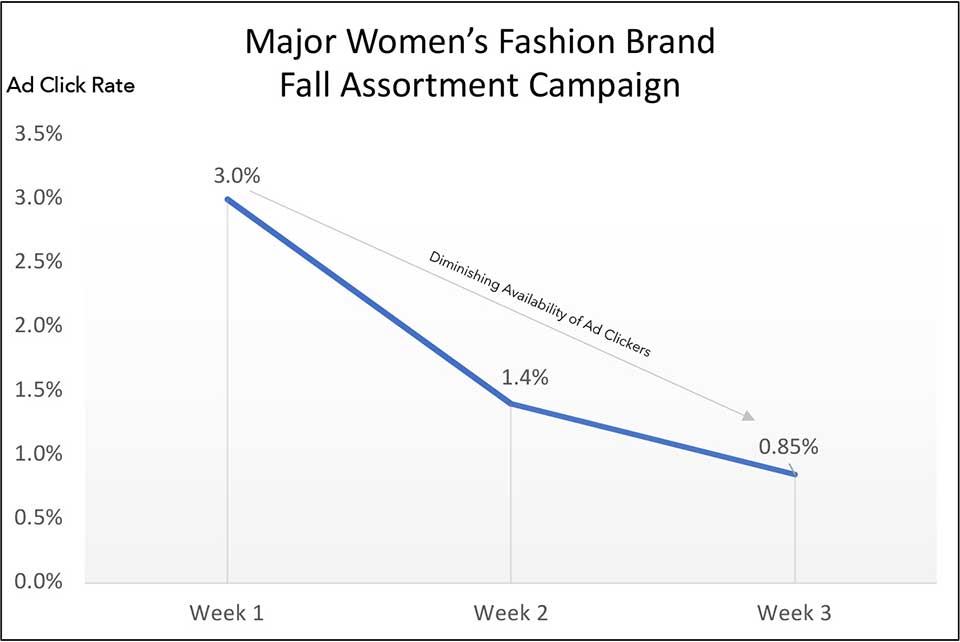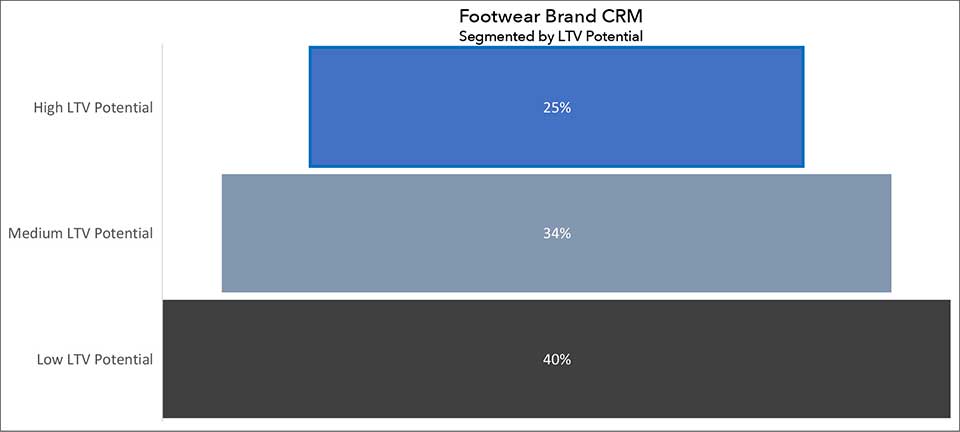By Rob McGovern is the CEO and Founder of PreciseTarget
Facebook has become the mainstay advertising venue for fashion brands. If you ask why the digital marketer will say it works the best. They’ve conducted A/B tests showing Facebook (et al) has the lowest cost-per-click or cost-per-conversion. Is it case closed, Facebook wins? Let’s take a look at how Facebook advertising could be hurting your brand, including leading you to overspend in your marketing budget.
Let’s start with what you want. If I administered truth serum to your team I’d hope to hear them say acquiring high LTV customers is the goal. You want customers who will be high repeat purchasers, have larger basket sizes, and most importantly, reduce the pressure to constantly acquire new customers.
What if Facebook has a financial incentive to garner clicks from consumers who won’t be high LTV customers? What if their incentives run counter to what’s good for you? The Facebook ad network, which includes Facebook, Instagram, and their open web ads, has a primary incentive of getting clicks on ads. Most all ads are pay-per-click, meaning a brand will pay $1 to $4 for a click on their ad. Facebook has a direct incentive to get a click on an ad, which is different than saying they are focused on finding you high LTV customers. In fact, they have a disincentive to chase the harder to get high LTV customers.
There are two fundamentals you should know about Facebook advertising. Rest assured; this won’t be ad-tech mumbo jumbo. Instead, I’d like you to understand it in the context of your brand:
The first fundamental is the Facebook ad network is based on lookalike marketing. You might not realize this, but your digital team has allowed Facebook to embed a tracking pixel on your ecommerce site. This tracker enables Facebook to identify nearly every person who visits your ecommerce site. I’m not talking about low fidelity cookies, rather Facebook’s tracker enables them to identify each visitor to your site, including their name, address, and contact information. Sadly, this tracking pixel was missed by the California Privacy Protection Act (CCPA). By identifying the visitors to your ecommerce site, Facebook can run lookalike algorithms, which identify ad targets who are most like the visitors to your site. Incidentally, I suspect your privacy lawyers missed this, Facebook can and does use data collected on your site’s visitors to help your competitors poach them.
Facebook’s lookalike algorithm is trying to find clones of your site’s visitors. This raises a question. What if the wrong people are coming to your site? Sadly, they will indeed clone the wrong people. One of our clients recently introduced a new women’s activewear product line and was perplexed why their Facebook ads were performing poorly. The answer was simple, Facebook didn’t have the brand’s female activewear customers visitors to clone.
The second fundamental is that Facebook has an incentive to advertise to people who click on ads. Believe it or not, there are ad-clicker people in the world. Most advertisers, and their ad agencies, push the “optimize” button when placing their ads on Facebook. This authorizes Facebook to run the ad in a way that maximizes the number of clicks, irrespective of the quality of the ad clicker. I’ve never watched the home shopping network, nor have I clicked on a Facebook ad. The ad clickers are out there, although almost certainly, your high LTV prospects aren’t ad clickers.


What’s the net result? First, Facebook ad campaign performance will almost always degrade over time. Simply put, they run out of ad clickers. In week one they’ll show your ad to the easy marks and your marketers will be joyous ….and then reality hits. The downward trend begins, illustrating they’ve run out of ad clicker people. Always insist that A/B tests run for several weeks, to see your true performance after the ad clickers have been exhausted. The second thing we see is low repeat purchase rates. A scoring system that evaluates customers in a brand’s CRM to determine how good a match the customer’s taste is for the brand’s product assortment is the system companies need. You might discover 50 to 70%, have low LTV potential. Most brands have CRM’s filled with mostly one-and-done customers. You’re seeing the negative flywheel, poor quality site traffic leads to cloning the wrong people, leading to low-quality acquisition.
Does this mean you should stop advertising on Facebook? No, it means doing it differently. You may not realize it, but Facebook will accept complimentary data when your ad is placed. Essentially it allows you to instruct Facebook to take a different approach. It’s if you are saying instead of doing lookalikes, I’d like you to use this targeting file. We’ve learned that when Facebook is handed the right data advertising expenses will typically fall 30 to 40%, and the brand will acquire customers with far higher LTV potential.
Lastly, brand marketers should take a more thoughtful approach to use Facebook ad optimization. Campaigns should be tuned to acquire customers with the highest LTV potential, not for finding the easy mark ad clickers. Today’s easy click can lead to tomorrow’s low potential customer in your CRM.
Rob McGovern is the CEO and Founder of PreciseTarget, a retail data science company that helps retailers and brands identify and target their highest-quality customers through data enrichment of existing customer information and through acquisition audiences curated specifically to their assortment. Rob was also the CEO and Founder of Careerbuilder.com.








